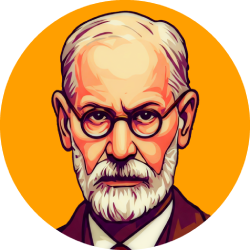When we think of Sigmund Freud, we usually come to mind the figure of a serious and rigorous psychoanalyst, creator of psychoanalytic theory that revolutionized the way we understand the human mind. However, few know that Freud’s works are also remarkable examples of literary and rhetorical style. In this article, we will explore how Freud’s writing style contributed to the dissemination of his ideas and how this can be applied to our daily lives.
Introduction to Freud’s style
Freud’s literary style is characterized by a clear clarity and conciseness, considering the complexity of the topics he addresses. His works, such as “the interpretation of dreams” and “the malaise in civilization”, are written in an accessible way, allowing non-specialized readers to understand their theories. This ability to communicate complex concepts simply is one of the secrets of Freud’s success in popularizingpsychoanalysis.
In addition, Freud was a master of rhetoric, using techniques such as metaphors and analogies to illustrate difficult points. This not only made your texts more interesting, but it also made it easier to understand psychoanalytic concepts by the general public.
THE IMPORTANCE OF NARRATIVE
Freud often used clinical stories and cases to illustrate his theories. These narratives not only made their texts more attractive, but also served as powerful pedagogical tools. By presenting real or hypothetical cases, Freud was able to convey psychological complexities in a concrete and tangible manner.
This narrative approach is especially effective because it allows us to connect psychoanalytic theories with real -life situations. By reading about patients’ cases, we can reflect on our own experiences and emotions, making psychoanalysis more relevant and applicable in our daily lives.
The use of metaphors and analogies
Freud was a fan of the use of metaphors and analogies to explain psychoanalytic concepts. For example, when describing the unconscious as a “submerged” part of the mind, he used the iceberg metaphor to illustrate how just a small part of our thoughts and motivations is conscious.
These metaphors not only make understanding easier, but also add a layer of depth to their explanations. They invite the reader to reflect on the complexities of the human psyche in a way that would be difficult through direct and technical descriptions.
Connections with everyday life
Freud’s ability to connect his psychoanalytic theories with aspects of everyday life is one of the factors that contributed to the broad appeal of his works. In discussing topics such as dreams, forgetfulness and linguistic lapses, it showed how psychoanalysis can be applied to better understand our own lives.
For example, by exploring how dreams can reveal repressed desires or internal conflicts, Freud offered a tool so that people could reflect on their own dreams and gain insight into themselves. This practical approach has made psychoanalysis more accessible and relevant to a large audience.
In addition, the way Freud discussed the influence of childhood and family relationships on personality formation is particularly interesting. It showed how seemingly trivial events of our childhood can have a lasting impact on our adult lives, encouraging readers to reflect on their own life experiences.
Conclusion
In short, the literary and rhetorical style of Freudian works played a crucial role in the popularization of psychoanalysis. Through the use of narratives, metaphors, analogies and concrete examples, Freud was able to convey complex concepts in an accessible and interesting way.
His approach not only educated a broad audience about psychoanalysis, but also inspired reflection and self -analysis. In reading Freud’s works, we are invited to explore our own minds and lives, applying psychoanalytic theories in our daily lives to better understand ourselves and others.
Therefore, Freud’s legacy goes beyond psychoanalysis as theory; He also left us an example of how clear, engaging, and rhetorically powerful writing can be a transformative tool to disseminate knowledge and inspire change.


